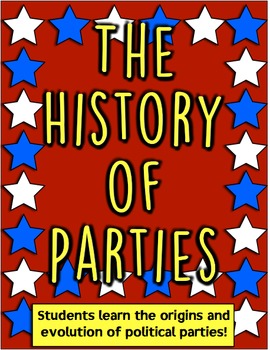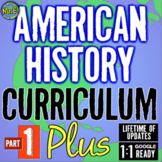Political Parties & History! Learn Origins & Evolution of Political Parties!
- Zip
What educators are saying
Also included in
- The American History US History Part 1 Curriculum PLUS: (1590-1877) contains thousands of pages of materials across 13 American History units and supplement bundles, including assessments, interactive notebooks, Google 1:1 resources, Escape Room breakouts, and much, much more.Purchase this and enjoyPrice $479.99Original Price $951.16Save $471.17
- In this Presidential election, primary and caucuses, and electoral college bundle, you receive 7 election resources to teach the purpose of a primary and caucus, campaigns, political parties, and much more! Purchase this bundle for $20, instead of paying $25 for buying each resource separately!ThisPrice $20.99Original Price $27.97Save $6.98
Description
In this Political Party history activity, students learn the origins, history, and evolution of political parties in the United States to understand their impact on American History.
Students are engaged with two parts with this political party and elections resource. Part one focuses on the origins of the first debate between political groups (Federalists and Anti-Federalists) and the fight over the United States Constitution. Part two focuses on the history of political parties through five different political eras. Students are introduced to all of the major political parties and their views including the Federalists, Democratic-Republicans, Whigs, Jacksonian Democrats, National Republicans, Northern and Southern Democrats, Free Soil, Republicans, the Know Nothing Party, the Greenback, Progressive (Bull Moose, Populist, and Prohibition parties!
A two-party student worksheet is included to guide students through origins and evolution of political parties!
A key is included!
Enjoy!
This election resource is included in the engaging and hands-on 7-lesson Election Bundle, located here:
Election Bundle! 7 Fun & Engaging Resource on Elections, Primaries, Campaigns!
Buy the Bundle and Save a Bundle!
----
Be sure to follow the History with Mr E Facebook page, and don't forget to signup for the Social Studies Newsletter to receive information on flash sales, product releases, and classroom tips!
----
Check out my other engaging products on the election system below:
Student Election and Campaign Simulation! Engaging & Authentic! Students create a campaign!
Is it a Primary or a Caucus? Students learn difference between primary & caucus!
The Electoral College Poster Project!
History of Political Parties: Learn Origins & Evolution of Political Parties!
How to Win an Election: Students Understand Election Trends and Swing States!
Elections, the Media, & Memorabilia: How Does Media Win Votes in an Election?







